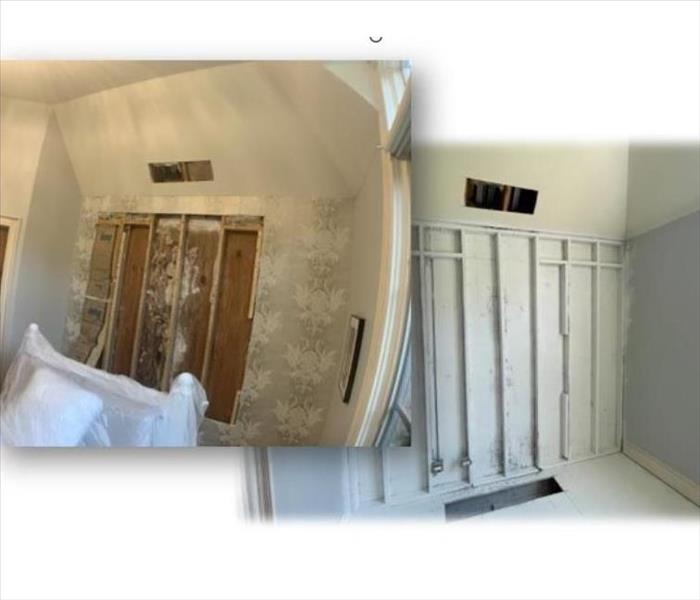Recent Mold Remediation Posts
Mold? No Problem!
10/27/2023 (Permalink)
Sometimes water losses and leaks can happen without us knowing, and when these problems go unnoticed it can cause additional damage such as mold growth. When you first see signs of these problems, be sure to call in the professionals for an assessment, report, and expertise advice on how to handle the situation- SERVPRO! Our mold certified technicians will be there when you need us and are only one phone call away.
As soon as our crew is one site for the assessment, they will begin to determine the origin of the moisture that has caused the mold to begin to grow. Based on this finding they can help determine if there are any repairs that are necessary and what the next steps look like. If the mold growth is extensive (over 10 sq ft), we will recommend having a testing company to come out and gather multiple samples of the mold growth to determine the specific type, as well as put together a protocol for remediation to ensure that there no mold growth activity after our remediation is complete.
Some of the standard mold remediation service we perform is containment of the affected area to prevent mold spores from spreading, HEPA cleaning the studs affected, and encapsulating which is the process of using a mold resistant paint to prevent the spreading of the mold- as seen in photos below.
If you have any doubt that there may be mold in your home, whether it be from an odd smell, visible mold growth, bubbling on drywall, paint, or other surfaces- give the experts a call in the mold remediation field for a consultation so that you have peace of mind in your home! Give SERVPRO a call- 247/365 days a year! (630) 377-7062
Can Mold Be Present Without Being Visible?
2/4/2020 (Permalink)
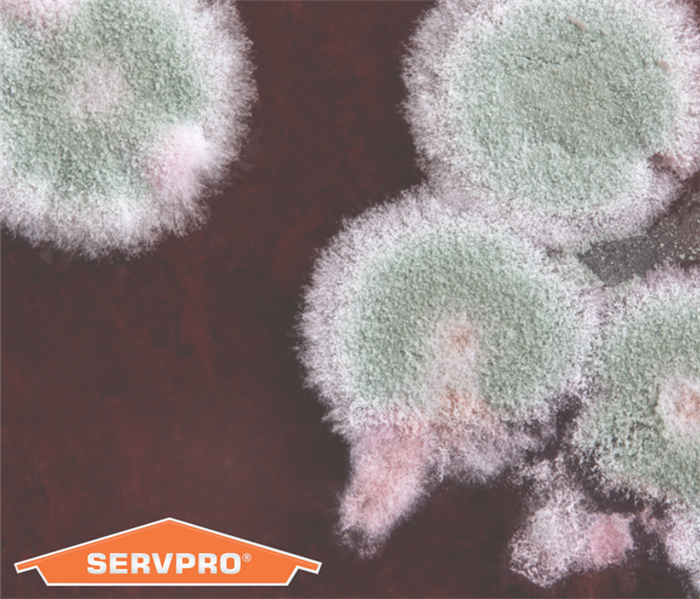 An indoor environmental specialist will focus on getting mold levels back to normal and natural levels.
An indoor environmental specialist will focus on getting mold levels back to normal and natural levels.
Since mold is always present in small amounts, how can you be certain your commercial building does not have a mold problem? Just because you cannot find any evidence of mold growth, does that mean you are in the clear? Not necessarily. If you suspect the presence of mold, perhaps because of water damage in the building, it may be time to call in an indoor environmental specialist from Dundee, IL. Before you call in a specialist, though, you should understand the following information:
A mold test is probably not needed if you can find visible mold
There are no federal standards for mold spores established by the EPA
Tests and sampling analysis should be conducted by professionals
Analysis standards should follow those established by professional organizations
Getting a Handle on Mold Growth
If a mold remediation team has come in and cleared your building of mold, the company will likely have an indoor environmental specialist on staff. That person will have been trained and certified in the latest techniques of mold mitigation. Not only can the specialist find mold with sensitive equipment, he or she can also give you a sense of how effective the cleanup has been.
Getting the Best Results
By relying on specialized training and scientific standards, a specialist can give your building a clean bill of health. The specialist can also provide tips on keeping high levels of mold from returning. These measures include keeping humidity levels down, keeping on eye open for the formation of mold colonies and cleaning up all instances of water damage in the building.
4 Reasons Mold Might Come Back After Removal
5/24/2019 (Permalink)
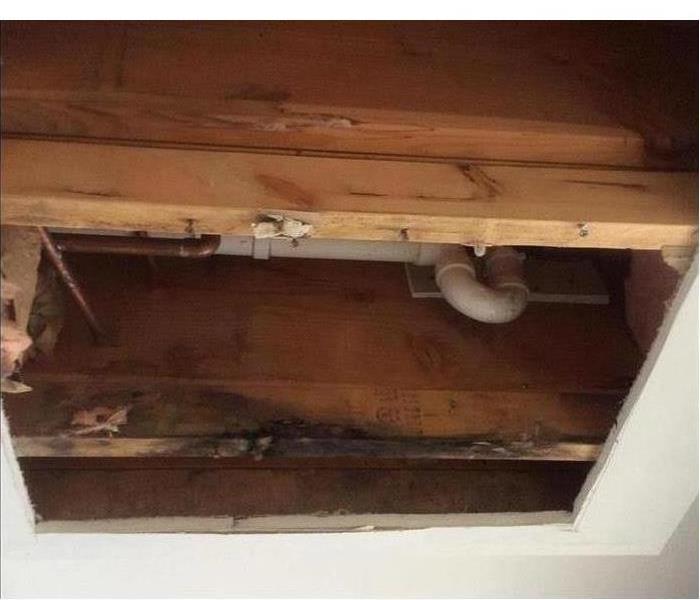 Mold due to leaking pipe
Mold due to leaking pipe
4 Reasons Mold Might Come Back After Removal
For many homeowners, mold growth is a common, and sometimes frustrating, problem. This stubborn fungus can keep showing up even after you thought you’d gotten rid of it. If you are having an issue with black mold, consider the following reasons why it might keep returning.
1. Mold is Present in Most Environments
Something you might not realize about mold is that it exists in many environments. However, this is usually no cause for concern. While mold may be present in your West Dundee,IL home, most varieties are not harmful, though it’s near-constant presence can make it difficult to get rid of.
2. Your Home Has High Levels of Humidity
Black mold thrives in moist environments. If your home is humid, this makes it easier for the fungus to spread. Using exhaust fans or opening windows can sometimes help reduce levels of humidity. If this does not work, you might consider investing in a dehumidifier.
3. You Are Not Allowing Areas to Dry Thoroughly
Another thing that can contribute to black mold growth is not allowing certain areas to dry completely after use. Using a towel to dry sinks and showers instead of letting them air dry can help reduce this problem. You should also be sure to have any leaks fixed right away.
4. The Area Has Not Been Properly Cleaned
After doing mold cleanup in an area, the problem may not permanently go away. You should maintain these areas by cleaning them regularly to prevent the growth from returning.
If you have a long-term problem with mold that you can’t seem to resolve on your own, then enlisting the help of a mold remediation service may be the best solution. They will have the experience to locate any mold growth in your home as well as the tools to properly remove it. Once the mold has been removed, be sure to maintain your home to reduce the chances of another infestation.
3 Facts About Mold
1/22/2019 (Permalink)
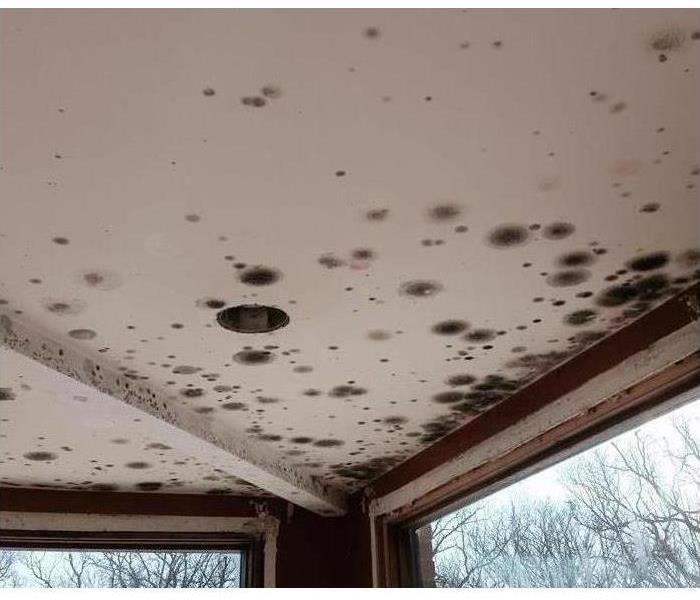 Mold can spread quickly and can be in places you may never see.
Mold can spread quickly and can be in places you may never see.
3 Facts About Mold
Black mold is the boogeyman of many homeowners. We know it’s unpleasant to look at, but just how much do you know about the real threat mold poses in your East Dundee, IL home? Read up on these surprising facts about mold to get a real handle on this household menace.
What is Mold Anyway?
Found throughout our environment, mold is a fungus comprised of small organisms. It thrives in moist, dark place, replicating via lightweight spores that are easily dispersed through the air. In homes, mold tends to thrive in:
- Basements
- Crawl spaces
- Bathrooms
- Under sink areas
Mold Isn’t Just Black
While the dark kind is most sinister, mold can come in orange, green, purple and even pink or white. This all depends on the organisms making up the mold and that plays a big part in what you do to clean it up. Whatever the color, mold is not something you should ignore in your home.
Mold Is Not Mildew
While the terms mold and mildew are often used together, these are two different things. They’re both fungus. However, while mildew only grows on surfaces, mold has roots that can take hold where the eye can’t see. This is one of the top reasons that it’s so hard to get rid of it - the leftover roots mean it can re-establish itself easily.
You Can’t Get Rid of All Mold Spores
Despite advances in mold cleanup, there’s no true, practical way to eradicate all mold spores in an indoor environment. They’re too light and too numerous. Instead, the answer to preventing black mold growth is controlling moisture. That means staying on top of leaks and drips, cleaning wet materials and preventing condensation.
Black mold can grow just about anywhere, feeding on wood, paper and even carpet in your home. If you’re tired of fighting the fungus, connect with a mold remediation expert to explore your options.
Tight Spaces Make Mold Removal Difficult
9/14/2018 (Permalink)
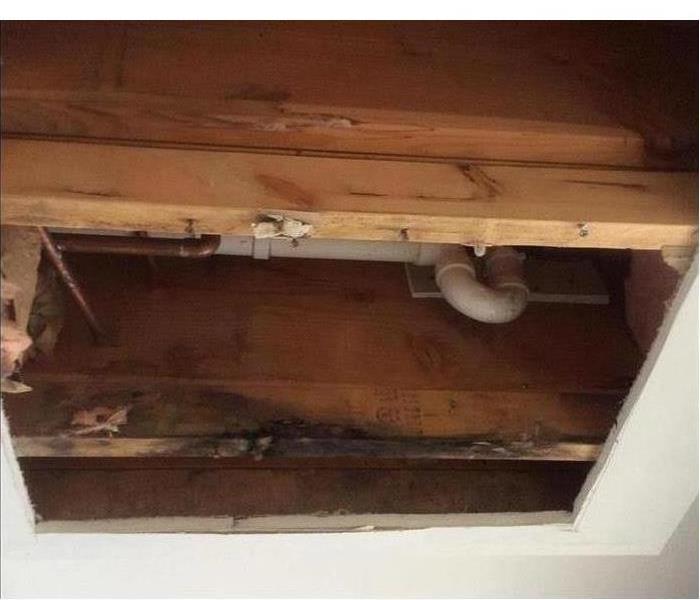 Mold in crawlspace due to leaking pipe in a Carpentersville, IL home
Mold in crawlspace due to leaking pipe in a Carpentersville, IL home
The crawlspace under a home is the perfect place for mold to hide and grow. It provides all the ingredients necessary to support a thriving colony of mold.
- Wood framing provides a food source.
- Normal moisture, rain and flooding provide a water source.
- Darkness provides a suitable environment
Mold removal in such tight spaces will always be a challenge, even in Carpentersville,IL . It’s a good thing that there is the option to soda blast.
Baking Soda Blasting Works Well in Tight Spaces
Think of this as sand blasting except with baking soda instead of sand. With this technique, baking soda is blasted under high pressure at all the exposed surfaces in the crawlspace. This removes the mold and leaves the surfaces looking like new. Once the blasting is complete, the surfaces are wiped down and the baking soda and mold residue are vacuumed away. Soda blasting takes a fraction of the time of conventional methods and doesn’t require dangerous chemicals.
No Blasting Material Is Better for Mold Removal Than Baking Soda
When it comes to mold removal by blasting, sand or any other blasting material would perform well. However, baking soda has some special characteristics that make it the best choice for mold removal.
- It is an effective deodorizer and can help remove the musty smell that accompanies mold.
- It is water-soluble which can simplify cleanup.
- It is a non-toxic chemical that is completely harmless to workers and the environment.
- It does not produce sparks when the soda blast encounters metal items.
- It is as effective as sand but generates significantly less waste.
- It is softer than sand which reduces damage from cleaning.
Mold Removal in Tight Spaces Is Still a Job for Professionals
When compared to traditional methods, soda blasting is a fast, easy and effective way to remove mold damage from tight spaces. When you see an experienced mold removal specialist in a crawlspace wearing a mask, respirator and hazmat suit, you will know you made the right decision to bring in experts.
Box of Horrors: Cleaning the Office Fridge
7/23/2018 (Permalink)
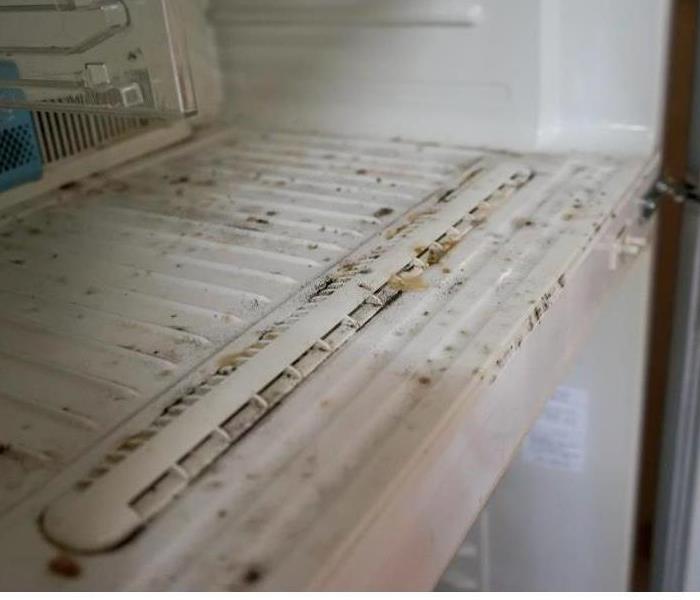 Your office refrigerator should be cleaned regularly to prevent mold from growing
Your office refrigerator should be cleaned regularly to prevent mold from growing
If your pulse quickens and you take a deep breath before opening the office fridge, you are probably not overreacting. Communal refrigerators in the workplace are notorious for developing fridge mold and the nauseous sights and smells that go along with it. All hope is not lost, though. You can play an integral role in preventing fridge funk in your office in Carpentersville, IL, by taking charge of the cleaning of the office fridge.
Common Causes
Before you can prevent a problem, you have to know what causes it. When it comes to items that contribute to the mold smell that assaults your senses, neglect is the most likely culprit. Food gets forgotten for many reasons:
• Office party leftovers that someone didn't want to go to waste but made no actual plans to use
• Well-intentioned lunch that was abandoned in favor of a spontaneous office outing
• Leftovers that are abandoned and left to fester over the weekend
• Employees forgetting to take their lunch breaks
You can't make people remember to eat the food they put in the office refrigerator, but you can help prevent fridge mold by providing stickers and asking them to date anything they put in the fridge. Let them know that food left longer than three days will be thrown out.
Fridge Cleanup
At least once a week, someone needs to clean the fridge. Not many people will sign up for this job. If you do not want the problem to get so bad that you have to hire remediation experts to take care of it, however, it is a good idea to volunteer or offer an incentive to someone else to take on disinfecting the fridge on a regular basis. The more often you clean, the less disgusting the task will be.
No one wants to see fridge mold in the office refrigerator, but without regular cleaning, it is almost a certainty. With a weekly cleaning schedule and a little cooperation from other employees, you can make your office fridge useful rather than scary.
For more on Carpentersville click here.
How does mold grow and why does it grow in my home?
6/21/2018 (Permalink)
Mold is a nasty substance that forms whenever there is an environment that is continually moist, is very dark, and has no moving air. It is a fungus growth that is akin to mildew. It grows from spores that float through the air. When moisture is introduced to that spot where it landed it will have the right conditions to exist. Then the mold can grow out of control if left alone.
Where does mold usually grow in a home?
Spaces such as basements, crawl spaces, closets, attics, behind bathroom walls and under floors where there are leaking pipes are good candidates for the growth of the substance. It grows silently and mostly unnoticed in most situations, and is usually undiscovered in places where no one goes into for extended periods of time.
Handle Mold with Three Steps
6/20/2018 (Permalink)
These three steps will help keep mold spore counts down in your home.
- Remove your shoes when entering your home.
- Your shoes track in spores that get lodged in the carpet.
- Clean door mats regularly to keep mold from collecting.
- Vacuum your home at least 3 times a week.
- Mold spores will get in your home through normal traffic.
- Pets will also bring in mold spores from the outdoors.
- Change air filters every 3 months.
- The air filters for your HVAC system collect dust and spores that will eventually clog the pores.
- Buy more expensive filters that can trap mold spores.
These three steps will keep your home from collecting mold spores. Your home will never be fully rid of spores but you can keep them from collecting too much.
Mold from water damage
6/11/2018 (Permalink)
Mold is a preventable problem for most home and business owners. Like most fungi, mold thrives in damp, dark environments, so mold prevention begins with monitoring your home for dampness and water damage. If you notice signs of excessive moisture around your house, don’t wait to take action. Bring in a professional to repair any leaks and to mitigate damage to building materials before mold has the chance to grow. Here are some of the most common signs and sources of excess moisture in your home.
Signs of Water Damage
Some signs of water damage are obvious, but if you have a leak inside the wall or floor, you may not notice right away. Here are some things to look out for:
• Water stains on walls or ceilings
• Bubbling or blistering of paint or wallpaper
• Sagging floor around fixtures or appliances
• Warping or cracking of wood or laminate floors
• Rusted hot water heater or pipes
• Excessive condensation on pipes or windows
• Damp insulation in the attic
• Damp concrete walls in the basement
• A musty smell (if mold growth has already begun)
Sources of Moisture
Leaks are one of the most common causes of unwanted water in the home. These can be due to places in the roof or around windows and doors that let rainwater in or damaged pipes in your walls. If the land slopes down toward your home, it can increase the chances of water seepage in your basement. Gutters on your roof that are clogged or not draining away from your house can also cause problems. In Bowling Green, KY, some homes may be at risk for flooding. If your home floods, you’ll want to bring in a restoration specialist to dry and restore the damaged areas as soon as possible, before mold growth begins.
The most effective mold prevention is making sure you tackle moisture as soon as you notice it. Keeping an eye out for potential leaks and seepage and addressing them right away helps keep your home dry and mold-free.
How To Clean Up Mold
5/13/2018 (Permalink)
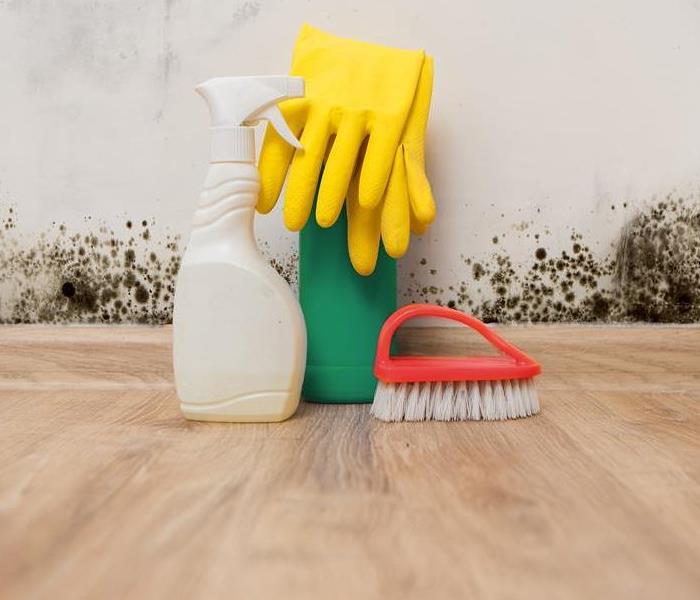 Call your local Mold Clean up specialist in your area
Call your local Mold Clean up specialist in your area
When you discover mold in your home, you may wonder if you should call in a professional mold remediation specialist in Carpentersville, IL, to handle the cleanup. The answer depends on how big the area of growth is, what types of materials are affected and the ultimate cause of the mold. If your home has experienced extensive water damage, a professional should be called in. If you only have a small area of mold growth, you may be able to clean it yourself. Here’s how to clean up small amounts of house mold and when you should call for help.
1. Find and Eliminate the Source
First, try to identify the source of moisture responsible for the mold. If you find mold in your bathroom, for example, it may just be due to condensation from normal use. Increasing ventilation, either by opening windows or installing a fan, can help keep things dry and prevent mold from returning.
If you’re not sure where the water is coming from, a mold remediation specialist can help with hydrometers and infrared light. Don’t attempt to locate a hidden leak yourself. If you have a broken pipe inside your wall, there may extensive hidden mold that should only be handled by a professional.
2. Scrub Hard Surfaces
If the mold is growing on a non-porous surface, such as enameled tile, plastic or metal, you can scrub it off using a household cleaner that contains bleach. It’s important to remove all the visible house mold.
3. Remove Porous Materials
If mold is growing on carpeting or fabric, you may need to throw out the affected material and replace it. Alternatively, contact a mold specialist in Carpentersville, IL, who may be able to restore it. Do not attempt to clean it yourself, because mold grows in the tiny spaces within the material and can’t be removed with normal cleaning techniques.
4. Dry Everything Thoroughly
The key to preventing house mold from returning is to keep everything dry. Once you’ve addressed the source of moisture and scrubbed away or removed mold, dry the area completely to make sure mold doesn’t return.
Click here for more on Carpentersville.
Mold Inspections Before Purchasing Commercial Properties
4/26/2018 (Permalink)
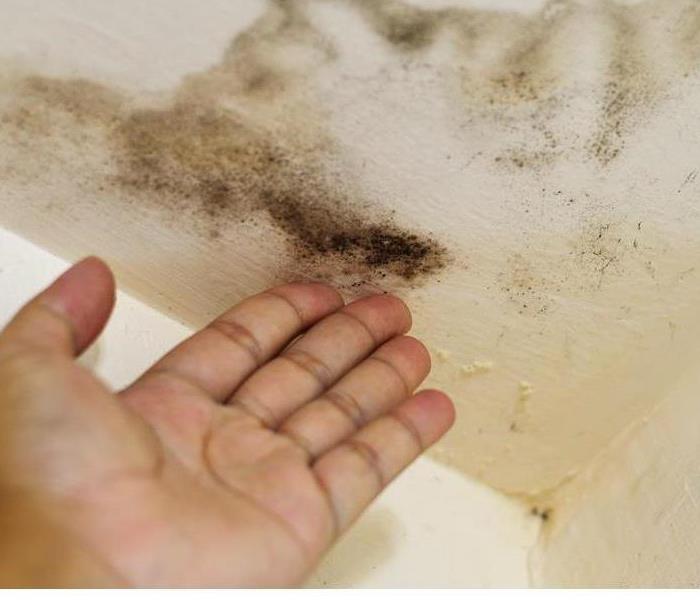 Mold inspection before purchasing your home or commercial business
Mold inspection before purchasing your home or commercial business
If you are in the process of buying a commercial property in West Dundee, IL, you probably have a few questions. One of those questions may be whether a mold inspection is needed before you go through with a purchase. The answer is more complicated than it may seem at first.
When you walk into a building, there are a few things that may push you toward having a mold inspection done:
• The smell of mold is present
• Water damage or plumbing leaks have occurred
• After mold removal, to determine that the mold is gone
There are a few other reasons you may consider mold testing options, but often the price is prohibitive. Because of that, it is not something you should do every single time. Instead, you should get an inspection if there is a convincing reason to do so.
Present, Visible Mold
You may think that seeing mold means that you need to do testing. However, that is not entirely accurate. If you already can see mold, there is no need for an inspector to look for it. The mold is present and needs to be taken care of, but testing would be an expense for no reason. Instead of spending money on inspection, use that money to have a professional remove the mold from the building.
Testing Kits
You can pick up a testing kit for mold at nearly any hardware store, so it may seem that this would be the way to go for testing. However, these mold sampling kits are not always easy to interpret for a layperson. They also don’t cover areas you may not test where mold may be prevalent or nonexistent.
If you are worried about a mold problem, a mold inspection may not be the answer. It can be better to go ahead and bring in a professional remediation team to review the issue and provide you with the best possible solutions.
Click here for more on West Dundee.
What to Expect From Your Insurance Company When You Have Mold Damage
3/29/2018 (Permalink)
If you discover mold growing in your home in West Dundee, IL, the expense of repairing the damage it causes may be considerable. Unfortunately, most home insurance policies do not offer mold coverage, giving you little to no reprieve of the cost of having it removed. Because fungus growth takes time, insurance companies often see a mold issue as a problem that could have been prevented with proper maintenance.
Preventing Mold Damage
Mold needs moisture to grow, so any area that is damp or shows signs of water damage is at risk for a mold problem. Routine maintenance is key to keeping mold out of your home. The following actions should be a regular part of your prevention plan:
• Inspect your home for condensation or damp areas that could foster fungus growth.
• Seal cracks in or near walls and windows to keep external humidity out of your home.
• Keep your home well-ventilated.
• Use exhaust fans, ventilators and dehumidifiers as often as possible.
• Fix plumbing issues in a timely manner.
Insuring Your Home
A history of mold can devalue your home. While the burden of proof that your mold problem was not caused by negligence is going to be on you, there may be clauses in your homeowner’s policy that allow a certain level of mold coverage. Review your policy with your insurance company and mold remediation specialists to figure out if part of the cost of the restoration services can be covered. If you live in an area with high humidity or frequent flooding, you may consider investing in additional mold insurance.
Any home at risk of water damage is also at risk of a mold problem. If, however, you are vigilant about preventing fungus growth and take the time to familiarize yourself with what is and is not covered by your homeowner’s insurance, you are less likely to be blindsided by the exorbitant costs of mold remediation.
Visit us at http://www.SERVPROeastwestdundeeswbarringtonhills.com for more information.

 24/7 Emergency Service
24/7 Emergency Service
